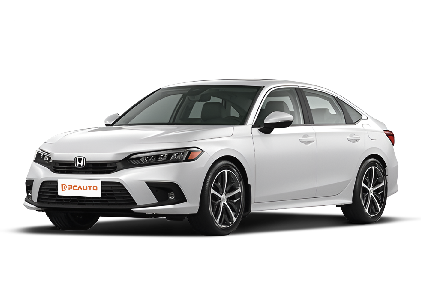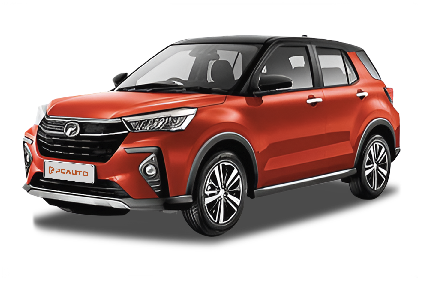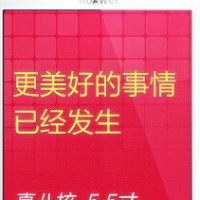Q
Is Proton X70 a Good Car? Learn the Pros and Cons Here
As a popular SUV in the Malaysian market, the Proton X70 offers a well - rounded performance. Its advantage lies in being equipped with a 1.5T engine, which provides smooth power output and better fuel economy than some models in the same class. It is especially suitable for urban commuting and family use. The standard intelligent connectivity system, such as voice control and remote start functions, meets the needs of local users. Moreover, the comprehensive active and passive safety features, including six airbags and adaptive cruise control, enhance driving safety.
It's worth noting that some owners have reported that the suspension tuning is on the stiffer side, which may affect the comfort of rear - seat passengers. Additionally, the maintenance cost is slightly higher compared to domestic models in the same class. However, Proton's extensive network of service centers across the country offers convenient after - sales support.
When it comes to the resale value, the X70 ranks in the middle in the Malaysian market. It is recommended that potential buyers opt for factory - certified used cars to get an extended warranty. In the same price range, you can also consider other brand models like the Honda HR - V or Mazda CX - 3. Nevertheless, the X70 still remains competitive in terms of interior space and equipment richness. Ultimately, your choice should be made based on your budget and usage scenarios.
Special Disclaimer: This content is published by users and does not represent the views or position of PCauto.
Popular Models
Related Q&A
Q
What is the most sold Toyota in 2023?
Looking at global and Malaysian market data for 2023, Toyota's top-selling model is the Corolla Cross. This compact SUV has won over plenty of buyers with its versatility, fuel efficiency, and the tried-and-true reliability Toyota is known for. Here in Malaysia, it's a hit because it blends city-friendly agility with just enough off-road capability to handle local road conditions, making it perfect for family needs.
In Southeast Asia, the Corolla Cross comes in both petrol and hybrid variants, and the hybrid is especially popular. Let's face it, with fuel prices being what they are, Malaysians really appreciate the significant fuel savings hybrids deliver – that's a big selling point.
But Toyota's success in Malaysia isn't just about the Corolla Cross itself. They've got a solid after-sales service network, and their vehicles hold their value well on the used car market – two things that matter a lot to local car buyers. Sure, competitors like the Honda HR-V and Mazda CX-30 are strong contenders, but Toyota stays ahead thanks to the trust people have in the brand and generally lower maintenance costs.
Q
How much is Innova Zenix 2023 in Malaysia?
The 2023 Toyota Innova Zenix comes with varying price tags in Malaysia depending on the trim and specs you go for. The base 2.0X starts at around RM 165,000, while the top-spec 2.0V can set you back roughly RM 180,000. Keep in mind, these prices might dip a bit with dealer promotions or if you opt for extra accessories.
As Toyota's main player in Malaysia's MPV segment, the 2023 Innova Zenix gets some solid upgrades – think a snazzier exterior, nicer interior materials, and better tech. Highlights include a bigger touchscreen, advanced driver-assist systems, and a more efficient 2.0L naturally aspirated engine, striking a good balance between family-friendly comfort and practicality.
Malaysian buyers have long loved the Innova Zenix for its reliability, roomy cabin, and strong resale value. It’s especially popular with big families or folks who hit the road for long drives often. If you’re in the market for an MPV, besides checking the price, it’s worth cross-shopping against rivals like the Honda BR-V or Mitsubishi Xpander to find the one that best fits your needs and wallet.
Q
Who makes the most reliable CVT transmission in 2020?
Back in 2020, Toyota and Honda were widely regarded as two of the top brands when it comes to building reliable CVT transmissions, and they've also got a solid reputation in the Malaysian market. Toyota's Direct Shift-CVT really steps up the game by adding a launch gear, which boosts both durability and responsiveness—perfect for zipping around the city. Honda's CVT, on the other hand, is all about that smooth, seamless ride and great fuel economy, which is why you'll find it in popular models like the City and Jazz. Nissan's Xtronic CVT is no slouch either; it's proven to be pretty steady, especially in models like the X-Trail and Almera where it adapts well to different driving conditions.
CVTs are loved for their continuously variable gear ratios, delivering a super smooth drive and better gas mileage. But here's the thing—unlike traditional automatic gearboxes, they need a bit more TLC. Regularly changing the specific CVT fluid is crucial to prevent overheating issues down the line. For Malaysian buyers looking at CVT-equipped cars, it's smart to check out the brand's reputation and how well the model suits local conditions. And don't skip the manufacturer's maintenance recommendations—sticking to those will go a long way in keeping your CVT reliable for years to come.
Q
What size is the LDV T60 2022?
The 2022 LDV T60 is a mid-size pickup truck, measuring 5365mm in length, 1900mm in width, and 1809mm in height, with a wheelbase of 3155mm. This sizeable footprint translates to a roomy cabin for passengers and a practical cargo bed, making it a solid fit for Malaysian users—whether it's for daily commuting or getting those business deliveries done. With a ground clearance of 215mm, the T60 boasts decent off-road capability, easily handling Malaysia's diverse road conditions, be it smooth city tarmac or those rough and tumble rural tracks. Under the hood, you'll find a 2.0-litre turbocharged diesel engine, which serves up plenty of grunt while keeping fuel consumption in check—perfect for those long drives or when you need to haul a heavy load. For Malaysian buyers, when picking a pickup, size and power are important, but so is durability and a reliable after-sales network. The LDV T60 strikes a good balance in these areas, making it a practical choice worth considering.
Q
How much does the Omoda C9 cost?
Over in Malaysia, the Omoda C9 is starting at around RM108,800, though the exact price can vary a bit depending on the trim level you pick and any ongoing promotions. Your best bet is to hit up your local authorized dealer for the latest figures. As a fresh-faced SUV in the market, the C9 is all about that youthful vibe and tech-forward features. Under the hood, you're looking at a 1.5L turbocharged engine pushing out 147 horsepower, paired with a smart infotainment system and some pretty solid advanced driver assistance features – all in all, it’s shaping up to be a pretty competitive package for the money. If you’re a Malaysian shopper, besides keeping an eye on the sticker price, it’s worth checking out the government’s EEV (Energy Efficient Vehicle) tax incentives. Some models that meet the criteria might score you a nice little tax break. Also, before you sign on the dotted line, do yourself a favor and cross-shop with segment rivals like the Proton X70 or Honda HR-V. Figure out which specs matter most for your needs, and definitely don’t skip booking a test drive to get a real feel for how it handles.
Q
How much is Omoda C9 PHEV in Malaysia?
Omoda hasn't officially announced the price tag for the C9 PHEV in Malaysia just yet. But if we look at where Omoda positions itself in the market and check out the current price range of other plug-in hybrid SUVs in the same class – think Proton X90 or Haval H6 HEV – we're probably looking at a ballpark figure between RM120k to RM150k. Of course, we’ll have to wait for the brand to drop the official numbers to be sure.
Billed as an eco-friendly and tech-forward SUV, the Omoda C9 PHEV is expected to pack a 1.5-liter turbocharged engine paired with an electric motor for its plug-in hybrid setup. Word on the street is it might deliver over 50km of pure electric range, which should be more than enough for daily commutes and help keep those fuel bills in check.
Good news for buyers: Malaysia’s government offers import tax breaks and road tax incentives for PHEV models, so you could save even more when you sign on the dotted line. If this Omoda has caught your eye, your best bet is to keep tabs on Omoda Malaysia’s official channels or swing by an authorized showroom for the latest deets. And hey, it never hurts to cross-shop with other PHEV SUVs in the segment – compare specs, after-sales policies, and all that jazz to make sure you’re getting the ride that fits your needs like a glove.
Q
What is the most scrapped car in 2024?
Industry data for 2024 shows Malaysia's most commonly scrapped vehicles are predominantly aging models over 15 years old – think early 2000s economy cars. These workhorses are hitting the scrapyard mainly due to outdated technology, skyrocketing repair bills, and the country's tightening emissions regulations.
Locally assembled classics like the older Proton Saga and Perodua Kancil top the scrap heap, which makes sense given their massive market penetration back in the day and the natural wear-and-tear from years of faithful service. Adding to the scrap pile: some diesel vehicles and older MPVs that can't keep up with the latest emissions standards as the government ramps up its green initiatives.
For owners, letting go of these old-timers isn't just about avoiding wallet-crushing repair costs. Programs like MARP (Malaysia Automotive Rebate Programme) sweeten the deal with new car subsidies, all while doing your part for the environment. Here's the tip: keep a close eye on your car's condition. When maintenance costs start outweighing what the car's actually worth, it's time to consider upgrading to a newer, more fuel-efficient model. You'll get better safety features and ride the wave of eco-friendly motoring – a win-win.
Q
Which car will be discontinued in 2025?
Looking at today's global shift toward electric mobility, several automakers have already announced plans to phase out certain gasoline-powered models by 2025. Take BMW, for instance—they're set to discontinue current entry-level combustion models like the 1 Series and 2 Series Gran Coupe, making way for a new generation of EVs. Mercedes-Benz has also confirmed it will axe some of its traditional ICE lineups to focus more on the EQ electric range.
But when it comes to the Malaysian market specifically, we’ll need to keep an eye on official announcements from local distributors. Why? Because model refresh cycles can vary quite a bit between regions. Malaysian buyers should pay close attention to changes in national import policies and environmental regulations too—these factors often shape how automakers structure their local product offerings.
If you’re a car enthusiast with your eye on a specific model, the best move is to reach out to your local dealership for the latest updates. And hey, it wouldn’t hurt to stay plugged into advancements in EV tech either—might as well start prepping for your next ride, right?
Q
How many gears does a 2020 Hyundai Kona have?
The transmission specs for the 2020 Hyundai Kona in Malaysia depend heavily on the trim and powertrain you pick. The sporty 1.6L turbo petrol variant comes mated to Hyundai's 7-speed dual-clutch transmission (7DCT), while the 2.0L naturally aspirated model sticks with the tried-and-tested 6-speed automatic (6AT). For those who prefer shifting gears themselves, some base trims might still offer a 6-speed manual (6MT) option.
Now, gear count isn't just a number—more ratios can mean smoother acceleration and better fuel economy. The dual-clutch setup here is snappy and efficient, perfect if you like a more engaging drive with quick shifts. On the flip side, the conventional auto in the 2.0L is all about reliability and low-maintenance peace of mind.
Malaysian buyers should really think about their daily grind too. City driving with constant stop-starts demands different transmission behavior than highway cruising, and Hyundai's Smart Drive Mode lets you toggle between Eco, Normal, or Sport settings to adapt—smart for tailoring responsiveness.
It’s worth noting rivals in this segment, like the Honda HR-V or Toyota C-HR, typically use CVTs or 6ATs too, but each brand tunes their transmissions with distinct characteristics. At the end of the day, nothing beats a test drive to feel which one gels best with your driving style.
Q
What kind of warranty does the 2020 Kona have?
The 2020 Hyundai Kona in Malaysia typically comes with a factory warranty of 5 years or 150,000 km, whichever comes first. This covers major mechanical components like the engine and transmission. The battery pack, on the other hand, gets an exclusive 8-year or 160,000 km warranty. It's worth noting that specific terms might vary slightly between dealerships or due to promotional offers, so it's always a good idea to check with an authorized dealer for the latest warranty details before making your purchase.
Important to remember: wear-and-tear items like brake pads and tires usually aren't covered, and neither is damage caused by improper use or failure to follow the maintenance schedule. That's why sticking to regular servicing at authorized service centers is key to keeping your warranty valid. For the electric variant, the Kona Electric, the high-voltage battery system typically has an even longer warranty – standard industry practice to protect the heart of an EV.
Malaysian buyers should also ask about extended warranty options, which some dealers offer as an add-on. It's something to consider based on your individual driving needs and how long you plan to keep the car.
Latest Q&A
Q
What is the CC of Honda City 2020?
The 2020 Honda City hits the Malaysian market with two engine choices: a 1.5-liter SOHC i-VTEC naturally aspirated petrol engine and a 1.5-liter DOHC i-VTEC hybrid system. Let's break down the specs. The petrol unit displaces 1497cc, cranking out 121 horsepower and 145 Nm of torque. On the hybrid side, it pairs that same 1.5-liter engine with an electric motor, resulting in a combined 109 horsepower – this one's all about fuel sipping efficiency.
Now, CC (cubic centimeters) is the measure of engine displacement, and it directly impacts how a car performs and drinks fuel. Typically, a bigger displacement means more power, but it can also mean higher fuel bills. The City's 1.5-liter sweet spot is a big reason it's so popular in Malaysia – it strikes that perfect balance between pep and fuel economy, handling both city commutes and longer drives like a champ.
But the 2020 City isn't just about the engine bay. It also comes loaded with Honda Sensing safety tech and a modern, fresh interior design, which really ups its game in the market. For Malaysian buyers, this car ticks all the boxes: practical, easy on the wallet at the pump, and packed with the latest tech. It's a solid all-rounder.
Q
How much does a Honda 2020 cost?
Prices for the 2020 Honda models in Malaysia vary quite a bit depending on the specific model and how it's kitted out. Take the Honda City, for example – you're looking at roughly RM70,000 to RM90,000. The Civic sits a bit higher, usually ranging from around RM110,000 up to RM140,000, while the CR-V typically falls between RM140,000 and RM170,000. exact figures hinge on the trim level, engine specs, and any extra add-ons you might go for.
When buying a new car in Malaysia, it's not just the sticker price you need to factor in. There's registration fees, insurance, road tax – all that extra stuff adds up and affects the final on-the-road cost.
Over in the used car market, 2020 Honda models will fluctuate in price too, based on mileage, condition, and remaining warranty. You can generally pick one up for 20% to 40% less than a brand-new equivalent.
If you're in the market, I'd definitely recommend shopping around different dealers to compare quotes. It's also worth checking out any ongoing Honda promotions or financing deals – those can really help you save some cash.
Hondas have a solid rep in Malaysia for being reliable and fuel-efficient, especially popular models like the City and Civic. They're pretty affordable to own long-term, and getting them serviced or repaired is relatively straightforward.
Q
What is the top speed of Honda City 2020?
The 2020 Honda City maxes out at around 190 km/h, which is the top speed you can squeeze out of its 1.5-liter i-VTEC naturally aspirated engine under ideal conditions. Of course, in the real world, you might see a slight difference depending on road conditions, how much you're carrying, or the weather. This car is pretty popular in the Malaysian market, and it's not just because of its solid performance—it's also about that fuel efficiency and nimble handling that makes city driving a breeze. The CVT gearbox in the City does a good job smoothing out power delivery, so acceleration feels seamless and efficient, whether you're commuting daily or hitting the highway for a longer drive. For Malaysian buyers, beyond just top speed, overall performance and maintenance costs matter a lot, and the City delivers here too. Its low trouble rate and wide service network make life easier for owners. If you're craving a bit more zip, there's always the Honda City RS variant. It gets some tweaks to the engine tuning and sportier bits, but don't expect a huge jump in top speed—these cars are all about balancing practicality with a bit of driving fun, after all.
Q
How safe is the Honda City 2020?
The 2020 Honda City holds its own when it comes to safety, packing in 6 airbags, Vehicle Stability Assist (VSA), Anti-lock Braking System (ABS), and Electronic Brake-force Distribution (EBD). That's a pretty solid setup for the class, and it should do a good job of keeping you protected during those daily drives around Malaysia. Honda's ACE Body Structure is also on board here, which is designed to effectively disperse crash energy and boost occupant safety in the event of a collision. It's worth highlighting that the 2020 City scored a 5-star rating in ASEAN NCAP crash tests, which is a solid stamp of approval for its safety credentials. For Malaysian buyers, picking this car means you're not just getting Honda's usual reputation for reliability, but also a decent level of safety kit. If safety is a top priority for you, it's definitely worth checking out the specific safety features when you're looking to buy – things like whether it comes with Honda Sensing. That suite includes handy advanced features like Adaptive Cruise Control and Lane Keeping Assist, which can go a long way in making your drives even safer.
Q
What is the fuel economy of the Honda City 2020?
The 2020 Honda City demonstrates excellent fuel efficiency in the Malaysian market. The variant equipped with the 1.5L i-VTEC petrol engine and CVT transmission has an official combined fuel consumption of 5.4 L/100km (approximately 18.5 km/L). The hybrid e:HEV variant is designed for even higher efficiency, though its specific fuel consumption figure should be verified with official sources or latest reviews, as the widely cited 3.4 L/100km (approximately 29.4 km/L) lacks direct support in the provided search results and may not reflect real-world conditions in Malaysia. Both powertrains closely align with the demands of Malaysian consumers who prioritize fuel economy. Actual fuel consumption may vary depending on factors such as driving habits, road conditions, and vehicle load. Therefore, adhering to a regular maintenance schedule is crucial for maintaining optimal fuel efficiency.
Given Malaysia's hot and humid climate, judicious use of the air conditioning system and maintaining the recommended tire pressure can contribute significantly to improving fuel economy. As a top-selling model in the B-segment sedan market in Malaysia, the Honda City's fuel efficiency remains competitive against its peers, making it a practical choice for daily commuting and family use. The e:HEV hybrid version, in particular, presents a compelling option for environmentally conscious drivers seeking to minimize long-term running costs, pending verification of its specific fuel economy claims.
View MoreLatest News

BYD will launch ATTO 2 DM-i in the European market to meet rapidly growing demand
MichaelOct 24, 2025

Chery unveils the T1TP concept car, which can switch to a seven-seat SUV or Double-Cab Pickup
LienOct 24, 2025

XPENG launches its first car equipped with an internal combustion engine, with a combined range of up to 1600km
AshleyOct 24, 2025

2026 Xpeng X9 launched in Malaysia, what are the improvements of the new Xpeng X9?
JohnOct 22, 2025

The brand-new MG4 sold 11,790 units in China within one month of its launch, with a pure electric range of up to 530km.
Kevin WongOct 22, 2025
View More


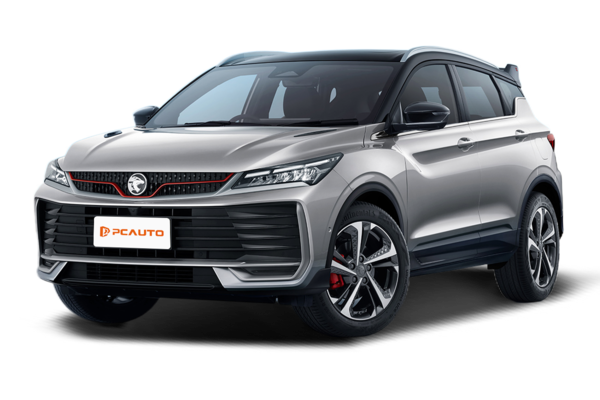
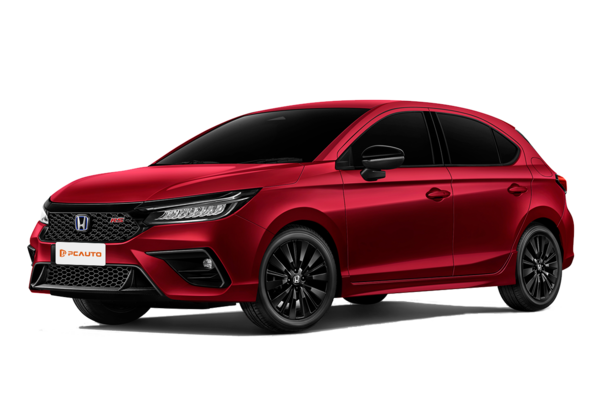
 Cars
Cars